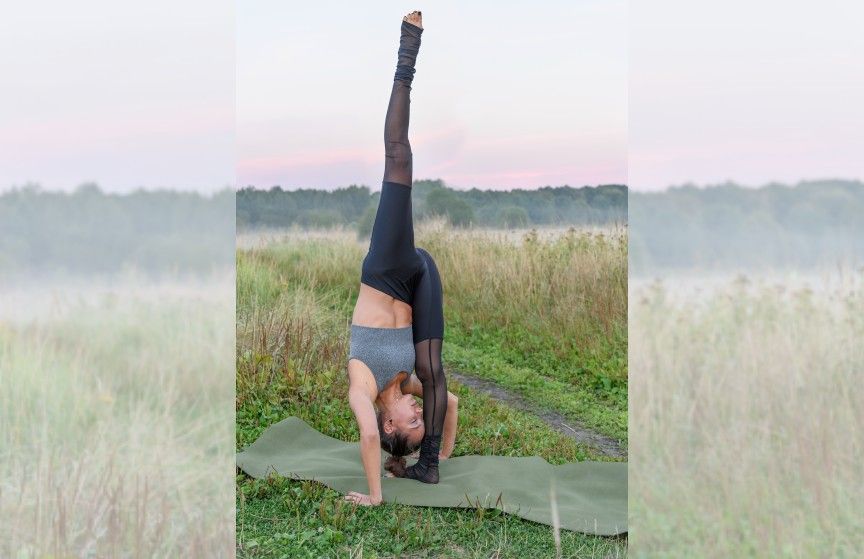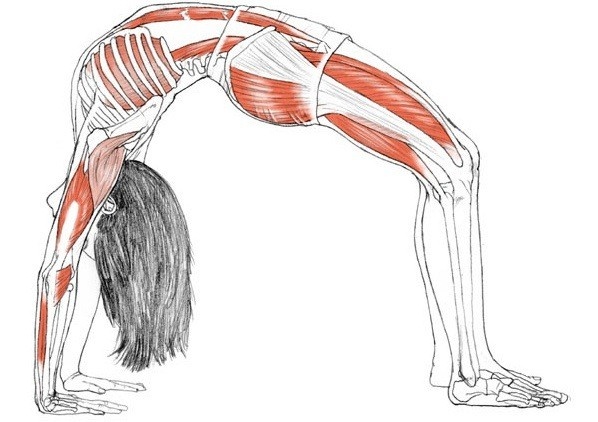
Yoga can be done more than once per week if you are looking to lose weight or improve your flexibility. Your body will adapt to as many as six or five sessions per week. You can also practice yoga two or three times per day. You will benefit from yoga as long as it is safe and effective.
Practicing yoga daily
You can stay calm and balanced by practicing yoga every day. You can also use yoga to reduce stress and anxiety. Yoga has been proven to help reduce symptoms of many mental conditions, such as post-traumatic stress disorder. Yoga can improve your overall quality of life by learning to accept change and learn how to flow with it.
There are many options for incorporating yoga into your day, whether at work, at home, at the gym or in your community. The best thing about yoga? It doesn't have any physical demands. There are many types of yoga that focus on self-awareness and mental discipline. Even when you are stuck in traffic for a while, notice your breathing. If you are walking to the grocery, notice how your feet feel and the air around your skin.

More than one yoga practice per week
Your body can reap the benefits of yoga. Even if you only practice yoga once per week, the benefits will be more lasting than if you do it twice or three times per week. To avoid straining your muscles, joints, or ligaments, it is important to have a variety of practice. You can start by practicing at home, during your lunch break, or any time you have five minutes.
Yoga daily can help you improve your balance. It will help you relax between workouts, improve your sleep habits and manage stress better. Although yoga is recommended to be practiced every day, you can practice it for as many as five days a week if you're able to spare the time.
For flexibility, practice yoga
Your flexibility can be increased by practicing yoga every day. It will increase your flexibility and aid in restoring your range of motion. People with arthritis, which causes pain and inflammation in the joints, can also benefit from this practice. More than 10 million people in the UK suffer from this condition, which can be alleviated through yoga.
Regular yoga practice is the best way to increase flexibility. Five minutes a day can make you more flexible than a weekly practice. It is easier to fit into your life. You'll find it easier to incorporate yoga into daily life. Also, practicing yoga every day will improve your flexibility. Daily yoga practice can reduce stress levels and tension.

Practicing yoga for weight loss
There are many benefits of practicing yoga on a daily basis, but the most important factor is to make the time to do it. Regular yoga practice can increase circulation and lower cholesterol. Yoga can help slow down the progression or heart disease when it is combined in with other healthy lifestyle habits. Yoga can also help to reduce stress.
Yoga is a great way to lose weight. If you want to lose weight, you must increase the intensity of your yoga practice. Begin with a 20-minute practice, and gradually increase the intensity. To avoid overexertion, it is important to take a day off once per week.
FAQ
What do I need in order to practice yoga?
For lying down, you'll need a mattress (some of them foldable), some loose clothes, and a towel or blanket.
In addition, you may also need some props such as blocks, straps, bolsters, blankets, or towels for certain poses.
You don't really need anything else. You must have a desire for positive change in your life and be willing to dedicate yourself to yoga.
Is yoga safe?
Yes! Yoga is generally considered low risk and safe for all. However, if you have any medical conditions and injuries, it is a good idea to consult your doctor before trying yoga.
What length should a yoga class be?
The average yoga session lasts between 45 minutes to an hour. The length of time depends on the type of yoga you're doing. If you want to focus on strength-building exercises, 45-60 minutes would probably be sufficient. You may need to spend an hour if your goal is relaxation or meditation.
The length of the class will vary depending on the type of yoga you take. Some classes are fast-paced while others focus on slow, deep stretching.
Where can I find a yoga instructor who is experienced?
It is possible to find yoga teachers in your neighborhood. If you live far from a yoga studio, you can search for one online. A yoga class that offers online registration might be worth your consideration.
Does yoga make me look like a hunk?
No! No, you won't look like a Hollywood celebrity after doing yoga. Yoga will make you look stronger, leaner and more flexible.
How will my clothes fit after I practice Yoga?
Most likely, yes. Many yoga pants are elastic at the waist and stretch when worn. They should also be comfortable enough to wear during your workout without feeling constricting.
Unfortunately, yoga pants might not fit you well if weight loss has occurred recently. This is why you might opt for shorts or leggings.
I am already doing some form of physical activity. What are my options for yoga?
Yes! Yes! Yoga can improve your training results, even if you're not very active. Combining yoga with other exercise such as running, biking, swimming or lifting weights will yield greater results.
Yoga helps you to focus on your breathing, which will help you burn calories quicker.
You can also improve your endurance. Yoga has many benefits, so it doesn't matter if you're an advanced or beginner yogi.
Statistics
- According to the Agency for Healthcare Research and Quality, falls are incredibly common among older adults in nursing facilities. Even the simplest ones can increase the risk of death (24). (healthline.com)
- Start your Fall off right with 20% off All Access Membership when you sign up by 9/25! (corepoweryoga.com)
- In comparison, a 125-pound person is estimated to burn 135 calories in 30 minutes of walking (at a pace of 15-minute miles) and 210 calories bicycling at a moderate pace on a stationary bike. (everydayhealth.com)
- A 2020 review of 27 studies (1,805 total participants) of yoga interventions in children or adolescents found reductions in anxiety or depression in 70 percent of the studies, with more promising results for anxiety. (nccih.nih.gov)
- Gentle yoga has been shown to ease some of the discomforts of tender, swollen joints for people with arthritis, according to a Johns Hopkins review of 11 recent studies. (hopkinsmedicine.org)
External Links
How To
Is yoga a good fitness exercise?
Yoga is not just for people looking to lose weight. Yoga is not just for those who want to lose weight. It helps them develop flexibility and balance.
Yoga isn’t just exercise. Instead, it’s an art form. They are used to relax and meditate. They can improve our posture, concentration and breathing.
Yogis are those who practice yoga. Yogis follow various forms of yoga, including Hatha, Ashtanga, Iyengar, Vinyasa, Bikram, Kundalini, Yin Yang, and Restorative.
Although there are many styles of yoga, they all share the same goals. Each type focuses differently on health and wellbeing. Yoga styles include Hatha, pranayama (meditation), and pranayama (pranayama).
Some yoga exercises don't require you to have any equipment
-
Sun Salutation-This series of 12 poses starts with a forward bending, followed by 10 different positions.
-
Warrior pose - This is when you hold a stick or a staff and take a warrior's pose.
-
Triangle Pose: This is where one leg is lifted behind the other and you bend at your knees.
-
Standing Forward Bend- This is when you lie down straight on the ground, with your legs straight. Then, fold forward to the waist.
-
Seated Twist: This is a pose that can be done while seated on a mat or in a chair.
-
Cobra Pose - This pose is performed lying flat on your back with arms overhead.
-
Child's Pose – This is the position where you lie face-up on the ground.
-
Cat/Cow Pose -- This pose is a mix of a cow pose and a cat pose. Your upper body should be lifted off the ground while you are lying down. Next, roll onto your back and place both of your hands under you shoulders.
-
Head tilt - This is a pose where you tilt your head back while keeping your eyes open.
-
Shoulder Stand – This position is where you stand upright while your arms are raised above and feet are raised above the neck.
-
Tree Pose – This is a pose where you kneel on your knees and place your hands underneath your shoulders.
-
Bow Pose- Bend forward from your hips into bow pose and place your hands on to the ground.
-
Corpse Pose - This pose is held for five minutes.
-
Mountain Pose: This pose is known as mountain pose, because it requires you to stand tall and keep your spine straight.
-
Legs Up the Wall Pose - This pose is executed by hanging upside-down from a wall.
-
Side Angle Pose – This is achieved by leaning against the wall and placing your right arm near the wall.
-
Plank Position – This is when you lay flat on your stomach, extend your left arm out and place your right foot in front of each other.
-
Bridge Pose: This pose can be achieved by balancing on your elbows or toes.
-
Reverse Table Top Pose - This pose is attained by lying on your tummy and reaching your arms toward the ceiling.
-
Handstand - This pose requires balance and strength. Hold yourself in between two walls or use a door frame to do this pose.
-
Half Moon Pose also known as Hero Pose. It's performed by standing on both your hands and toes.
-
Headstand (or Handstand) - This pose requires excellent balance and strength. This pose can either be performed on a wall or with a doorframe.
-
Forearm Balance- This position is done with your forearms on a tabletop.
-
Spinal twist - This is a pose where your belly lies while your arms reach your arms.
-
Supported Bound Angle Pose - This pose requires balance and support. To lean on a sturdy object, such as a tree trunk or an old beam, you'll need one.
-
Wide Leg Forward Fold: This position is achieved by stretching your legs apart and touching the tips of your toes.
-
Single Pigeon Pose – This pose is similar the the wide leg forward fold, but has only one limb extended.
-
Extended Puppy Dog Poses-This pose is extremely relaxing. This can be done by stretching your legs straight out and bending at the knees.
-
The Forward Bend pose involves bending forward and squatting cross-legged.
-
Crow Pose - Although this pose is hard to do, it can be extremely rewarding once mastered. The trick is to raise your arms higher than your head and lower them so that they touch the ground.